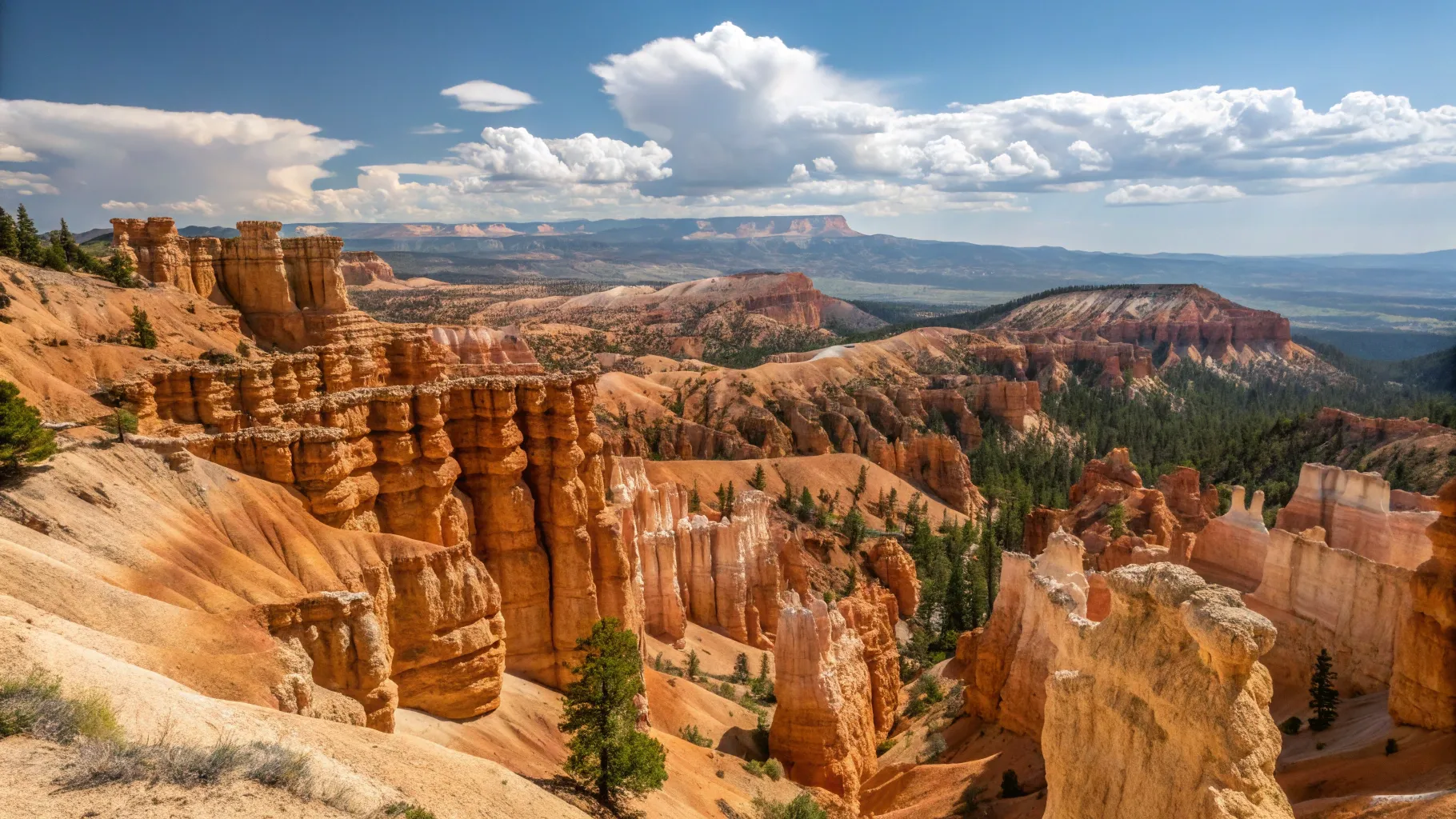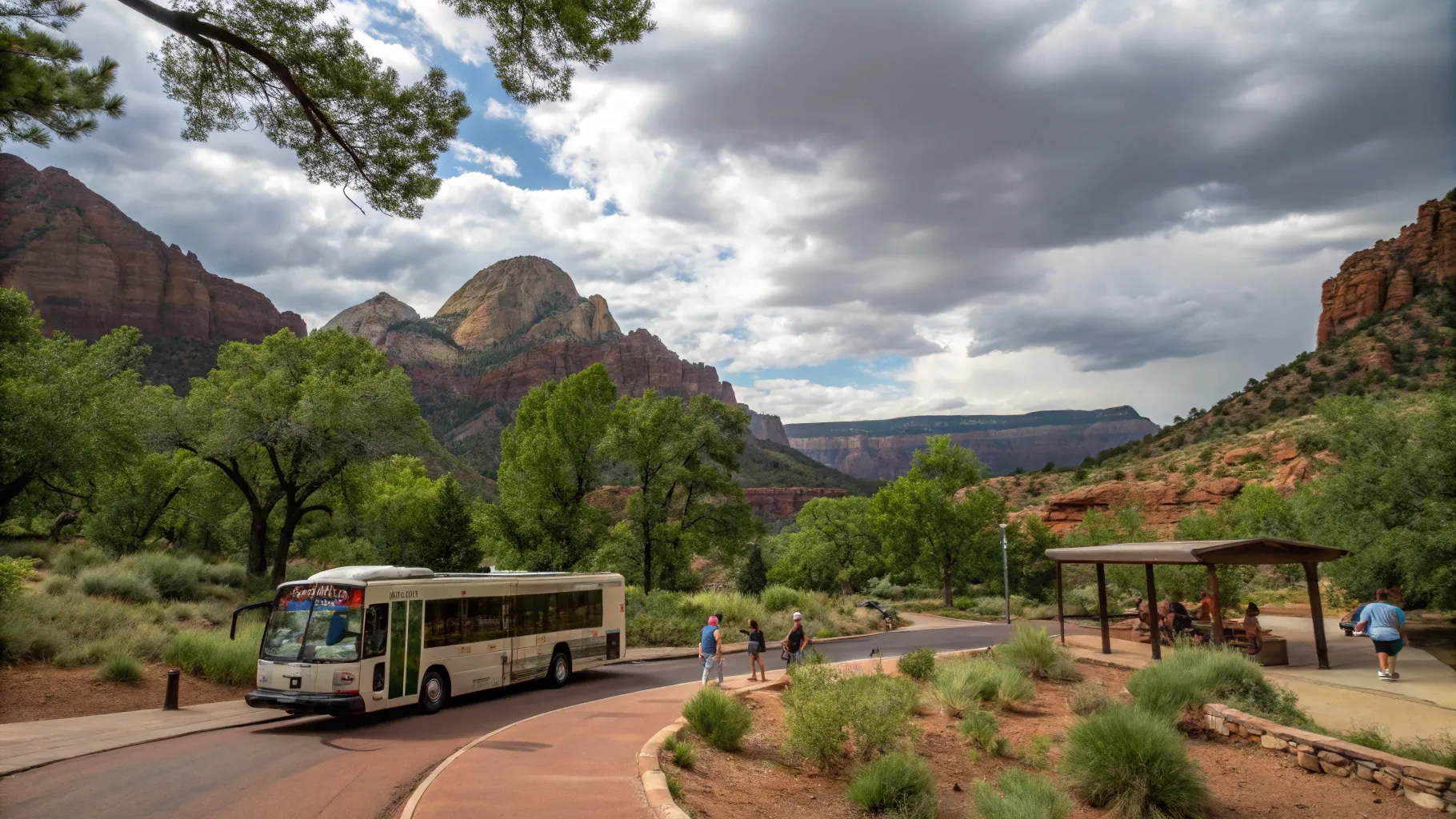Zion Shuttle Guide: When to Ride, When to Drive & Parking Hacks
- December 15, 2025
- Uncategorized
Southern Utah’s red rock country draws millions every year, and Zion National Park is the crown jewel. The park’s narrow, dramatic canyon... Read More

Staying in a vacation rental near Bryce Canyon puts travelers right in the heart of Utah’s breathtaking scenery. Imagine waking up to panoramic sunrise views, spending the day hiking through hoodoos, and ending the evening under one of the darkest, most star-filled skies in the world. This guide will provide everything needed to ensure an unforgettable adventure at Bryce Canyon National Park.
Bryce Canyon National Park is one of Utah’s Mighty Five national parks, located in southern Utah. While it may be smaller than its counterparts, covering just 55 square miles, it attracts over 2 million visitors each year. The park is renowned for its unique geological formations known as hoodoos—tall, thin spires of rock that have been sculpted by millions of years of erosion. These striking formations resemble goblins, castles, and even Queen Victoria, making them the stars of the show.
For fans of Disney theme parks, Bryce Canyon served as the inspiration for the Big Thunder Mountain Railroad ride at Disneyland. The park’s breathtaking scenery has captivated the hearts of many, making it a must-visit destination for families, adventure seekers, and nature lovers alike.
Upon entering the park, visitors will receive a detailed map, which is essential for navigating the terrain. The visitor center, located near the main entrance, provides valuable information about hiking trails and other activities. The park features one main road, Utah 63, which stretches 18 miles from the entrance to Rainbow Point, the highest elevation point within the park.
Along this scenic route, travelers will encounter nine viewpoints, each offering stunning vistas and opportunities to capture the beauty of the hoodoos. The busiest area is known as the amphitheater, which is home to most of the park services, including the lodge, general store, and campgrounds.

Due to its remote location, reaching Bryce Canyon can require some planning. The nearest major attraction is Zion National Park, approximately two hours away, while the closest airports—Las Vegas and Salt Lake City—are both about 4.5 hours from the park. Many visitors incorporate Bryce Canyon into a larger trip that includes the Grand Canyon, which is about 5.5 hours away from the south rim.
Getting Around Bryce Canyon National Park
Walking is a primary mode of transportation within Bryce Canyon. During the summer months, comfortable tennis shoes are suitable for most trails, while winter visitors should consider wearing spikes for icy conditions. Winter can extend from October through March, with the park often blanketed in snow.
In the summer, the park operates a shuttle service from May to October, making it easier for visitors to navigate busy areas. The shuttle picks up from Bryce City and stops at key locations within the park. For those wishing to explore on horseback, guided tours are available through a partner company of the National Park Service.

Additionally, for those looking for a bit more adventure, ATV rentals are available at Ruby’s Inn, allowing visitors to explore the terrain surrounding the park. However, cell phone service can be spotty within the park, so downloading offline maps or carrying a paper map is advisable.
Accommodations within Bryce Canyon are limited, with three main options: the Bryce Canyon Lodge, which features 114 rooms but is only open during the summer, and two campgrounds—one open year-round and the other seasonal. Campsites are available on a first-come, first-served basis or by reservation, with fees typically around $30 per night.
For those who prefer to stay outside the park, Bryce Canyon City offers several hotels, including the well-known Ruby’s Inn, which has been serving visitors for over 100 years. The Best Western Plus across the street, known as the Bryce Canyon Grand Hotel, provides comfortable lodging with amenities like free breakfast. Staying nearby is highly recommended to maximize time spent exploring the park.
Bryce Canyon is an all-year-round destination, but visitor numbers peak during the summer months. Approximately 60% of the park’s annual visitors come between June and September. Summer offers the advantage of open trails and services, but it also means larger crowds and potential wait times for shuttles.
Travelers opting for a winter visit can enjoy fewer crowds, but should be prepared for snow and possible trail closures. Winter offers a unique experience, transforming the park into a winter wonderland, where skiing and snowshoeing become popular activities. Whether visiting in summer or winter, travelers should be sure to hydrate and moisturize, as the dry air can quickly lead to chapped lips and dry skin.
Dining options within the park are limited. In the summer, visitors can enjoy meals at the lodge, which serves breakfast, lunch, and dinner, or grab snacks from the general store. Outside the park, Bryce Canyon City offers additional dining options, including the Canyon Diner, which serves burgers and fries, and Ruby’s Inn, which features a buffet.
Travelers planning to visit in winter should consider bringing their own meals, as dining options may be even more limited during this time.
Hiking is one of the primary activities at Bryce Canyon, with trails catering to all skill levels. The Rim Trail, particularly the paved half-mile section between Sunrise and Sunset Points, offers easy access to some of the park’s most stunning views.
For those looking for a more challenging hike, the popular loop trail between the Queen’s Garden and Navajo Loop is highly recommended. This approximately three-mile trail takes visitors down into the amphitheater and boasts incredible views of the hoodoos. The return journey can be steep, so hikers should plan accordingly and conserve energy.
For families or those not inclined to hike, the scenic drive through the park is a great alternative. This 18-mile route features nine viewpoints, with Sunset Point being a top choice for breathtaking views and sunset photography. Rainbow Point, at an elevation of 9,115 feet, offers expansive views of the plateau and is a fitting conclusion to a scenic drive.
Bryce Canyon National Park is a treasure trove of natural beauty and adventure, making it a perfect destination for families looking to explore the stunning landscapes of southern Utah. By planning ahead and utilizing the information provided in this guide, visitors can ensure an unforgettable experience filled with breathtaking views, unique rock formations, and lasting memories.
For those seeking a comfortable and convenient place to stay, consider browsing available vacation rentals at Stay Copper Rock. With a variety of options to choose from, travelers can find the perfect home base for their Bryce Canyon adventure.
Hoodoos are tall, thin spires of rock that have been formed through erosion. They are a defining feature of Bryce Canyon National Park.
While Bryce Canyon is open year-round, the summer months are the busiest. For fewer crowds, consider visiting in the fall or winter, but be prepared for snow and icy trails.
Dining options are limited within the park. The lodge serves meals in the summer, and visitors can find additional dining options in Bryce Canyon City.
In the summer, tennis shoes are suitable for most trails. In winter, consider wearing spikes for icy conditions. Always dress in layers to accommodate changing weather conditions.
Join The Discussion